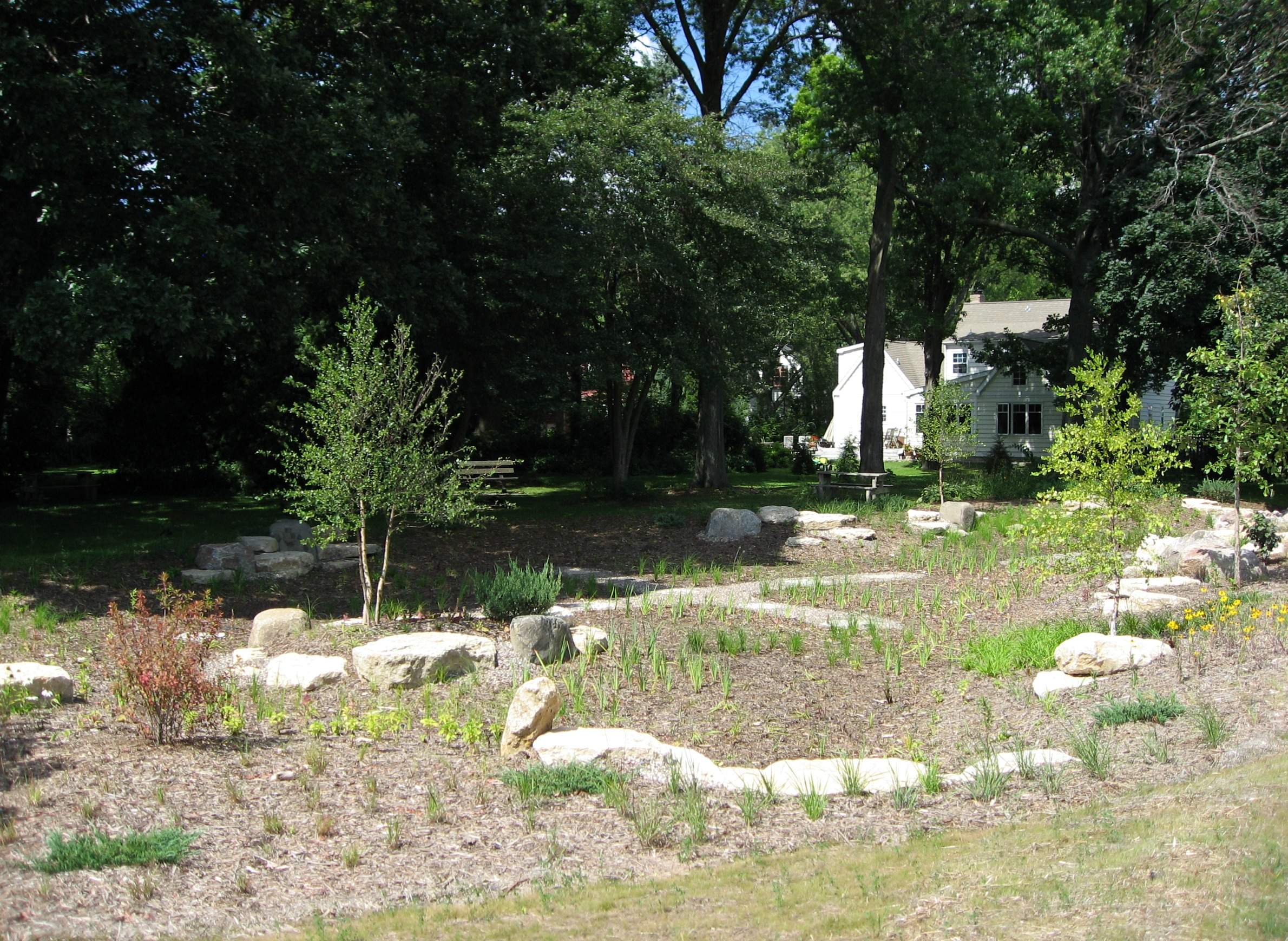
Rain gardens require ample sunlight and should be placed at least 10 feet away from a structure

Rain gardens require ample sunlight and should be placed at least 10 feet away from a structure
A deluge of flood warnings start cell phones buzzing around Wisconsin whenever heavy rains soak the state. While flooding can threaten homes along waterways, even landlocked properties experience water accumulation during heavy or sustained rainfall. But a strategically placed rain garden can mitigate excess water and add visual interest to a property.
A rain garden is a shallow depression filled with long-rooted grasses and other plants that soak up rainwater flowing from roofs, pavement or other impervious surfaces. Kris Pfeiffer, a Master Gardener in Racine, was faced with a shattered sump pump line that imperiled the foundation of her house. She installed a rain garden to help address the problem, and shared the process of how she created it with a group of colleagues in the University of Wisconsin-Extension Master Gardener Program. Her talk given on April 25, 2016 was recorded for Wisconsin Public Television's University Place.
"When life gives you lemons, you make lemonade. When life gives you a broken sump pump line, you make a rain garden," Pfeiffer said. "I like that I'm not dumping water into the storm sewer system, where the water picks up all the pollutants and herbicides and grass clippings and everything, and drags it down into the local waterways."
Pfeiffer followed a guide published by the Master Gardener Program and the Wisconsin Department of Natural Resources, and used a "Plant Finder" database created by the Missouri Botanical Garden to select 204 native plants, one for each square foot of her garden. She stressed the importance of choosing local vegetation, citing the dependence insects and birds have on plants like fox sedge, milkweed and false indigo for food and nesting.
While these gardens are designed to collect rainwater, Pfeiffer said they do not provide a breeding ground for mosquitoes, whose larvae require a prolonged habitat of standing water to mature. The plant composition of a properly designed rain garden will dispel collected water in two to three days.
Margie Hannes, who along with Pfeiffer is a member of the Racine Kenosha Master Gardener Association, likewise spoke about her rain garden and how it grew into a mature stage. She installed it to prevent flooding on a neighboring property, and it was funded with a grant from the Root-Pike Watershed Initiative Network.
"The water would swell into my property, and over to the neighbor in the west," Hannes said. "We can't change the natural swell of it, so we figured out if we put a rain garden in, that would help stop some of it."
Hannes found her garden grows a little larger with each passing season – from a starting size of 75 square feet to 84 square feet in her spring 2016 measurement – giving her room to plant more New England aster, Torrey’s rush and prairie cordgrass, among others. She warned that the prairie grass, with roots up to 20 feet long, is an aggressive grower and can overtake other plants.
Key Facts
Key Quotes